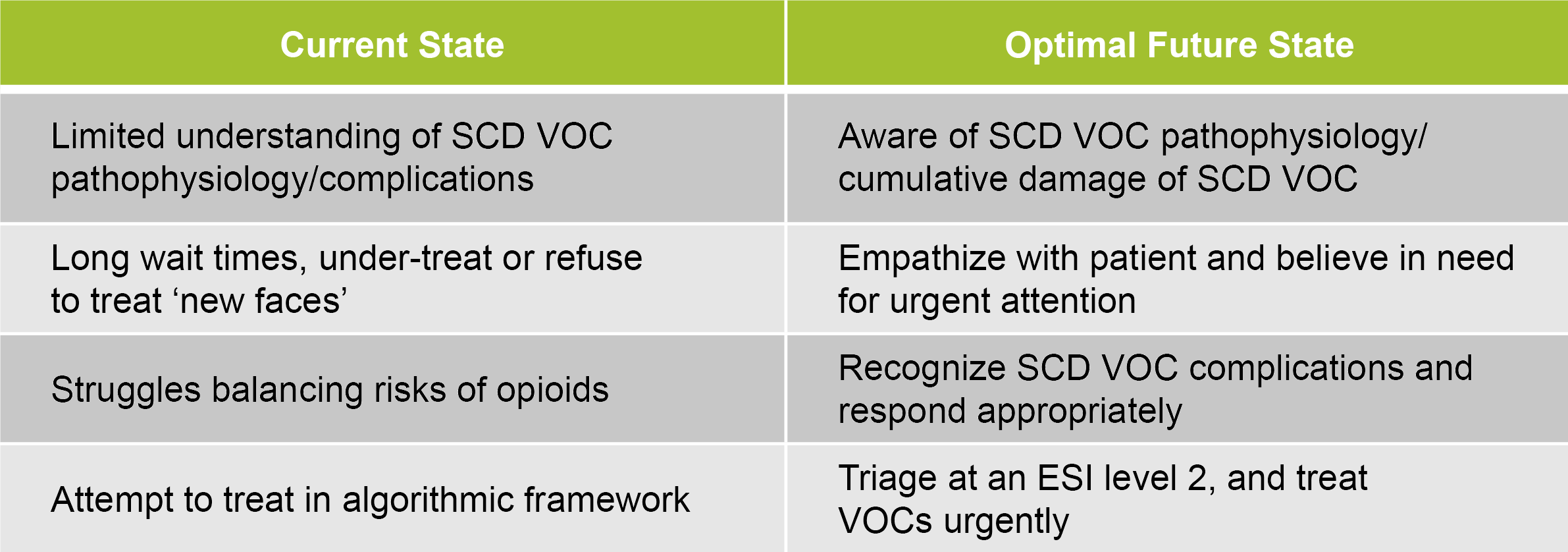Holistic Medical Strategy in Sickle Cell Disease
The need to take a holistic approach to medical strategic planning is becoming mission critical, especially in the close-knit, inter-connected, multi-stakeholder world of rare diseases. Of course, medical strategy for any given therapy starts with developing the clinical narrative. However, strategy in rare disease needs to go beyond articulating the clinical story. It needs to connect with the many stakeholders on their own terms, and demonstrate the understanding, passion, commitment and added-value biopharmaceutical companies bring. This will help ensure biopharma’s innovations have the best chance of reaching patients.
There are over 50* therapies in the Sickle Cell pipeline landscape, which will in the coming years mean more options for HCPs and patients. This article sets out a 4-step process to ensure that medical strategy in Sickle Cell Disease (and other rare diseases) goes beyond the clinical, and places medical innovation in a real, thinking, feeling, outcomes-focused world.
Step 1. Mapping the SCD Ecosystem
Sickle Cell Disease (SCD) is an inherited red blood cell disorder affecting millions worldwide. It is characterized by vaso-occlusive crises (VOCs), which are multicellular blockages in the vasculature that lead to severe pain, disability, and significant complications in most major body systems. SCD has a dramatic lifelong impact on the health of every person it affects. But the impact of SCD is not limited to health. Its effects are felt in various life domains including social life, school, work, civic life, cultural experience, even digital behavior.
Understanding the disease, the patient journey through the health system, a new therapy’s mechanism of action and clinical data, is the textbook starting place. Yet in a rare disease such as SCD we need a more holistic way of thinking about how a person’s health interacts with the entirety of their life.
To understand what goes on in those other life domains, we need to map out the SCD ecosystem using multiple data sources including qualitative and quantitative research, RWD, social media listening, medical literature, and advisory boards. We need to overlay insight from multiple HCP stakeholders beyond the expert KOLs and specialist hematology teams (‘SCD Mangers’), to include the ED physicians, hospitalists and pharmacists who manage the acute VOCs, community HCPs who may often have day-to-day patient contact, and of course, the patient advocacy groups, the patients themselves, and their families and friends.
Mapping the SCD Ecosystem
Step 2. Defining current and optimal state for each stakeholder
Based on the insights obtained during ecosystem mapping, the next step is to benchmark knowledge, attitudes, and behaviors for each stakeholder, and define the optimal future state.
What is their current level of disease management knowledge? Where does it need to be to optimize patient care?
What are their current attitudes and perceptions about the disease, treatments and patients? What attitudes and perceptions will help optimize patient care?
What do they currently do? What actions could be taken that would optimize patient care?
Different stakeholders can be grouped together and segmented based on commonalities such as role, knowledge level, attitude, organization type/mission, etc., and then prioritized accordingly.
Example ED Physician Current & Optimal State in SCD VOC
Step 3. Developing an integrated Clinical, Human and Value story
Integrating scientific, human and value insights into a simple strategic story, that can help achieve the optimal future state for all key stakeholders, places medical innovation in a real, thinking, feeling, outcomes-focused world.
Understanding the human context ensures that the clinical science is framed appropriately with respect to patient and other stakeholder needs, perceptions, and attitudes. All have hopes and fears that can directly impact therapy adoption, rejection or discontinuation.
Presenting a strategic medical story in a value-informed context, highlighting disease burden, health economics and outcomes research, and related data, can provide important insight into the magnitude of a given health problem or the value of a potential solution.
Such a holistic medical strategy in SCD will enable consistent education of all priority stakeholders while enabling communication complexity to be tailored to different segments. Numerous studies have shown that different individuals have different preferred channels and formats for consuming information – from infographics and video ‘shorts’ to publications, webinars, and peer-to-peer meetings. Developing a plan for digital and in-person engagement that considers stakeholder needs throughout a longer-term customer journey from awareness to advocacy, can deliver further personalization of content in this way.
Step 4. Measuring performance amongst key stakeholders
The final step in the strategic planning cycle is, naturally, measurement. Changes in knowledge, attitudes, and behavior can all be assessed with key stakeholders based on the benchmarks and optimal future states that have been defined. Quality, credibility, differentiation and clarity of company communications can also be simultaneously evaluated. Quantitative or even qualitative research methodologies can be deployed to do this.
In summary, the future of SCD management certainly looks brighter for HCPs, patients and their families, with the promise of new choices and freedoms. Developing a holistic medical strategy in Sickle Cell Disease, rooted in a deep understanding of the SCD ecosystem, that goes beyond the clinical, and frames the science in a human and value context, will help ensure those choices and freedoms are actualized.
*Including Pre-clinical



